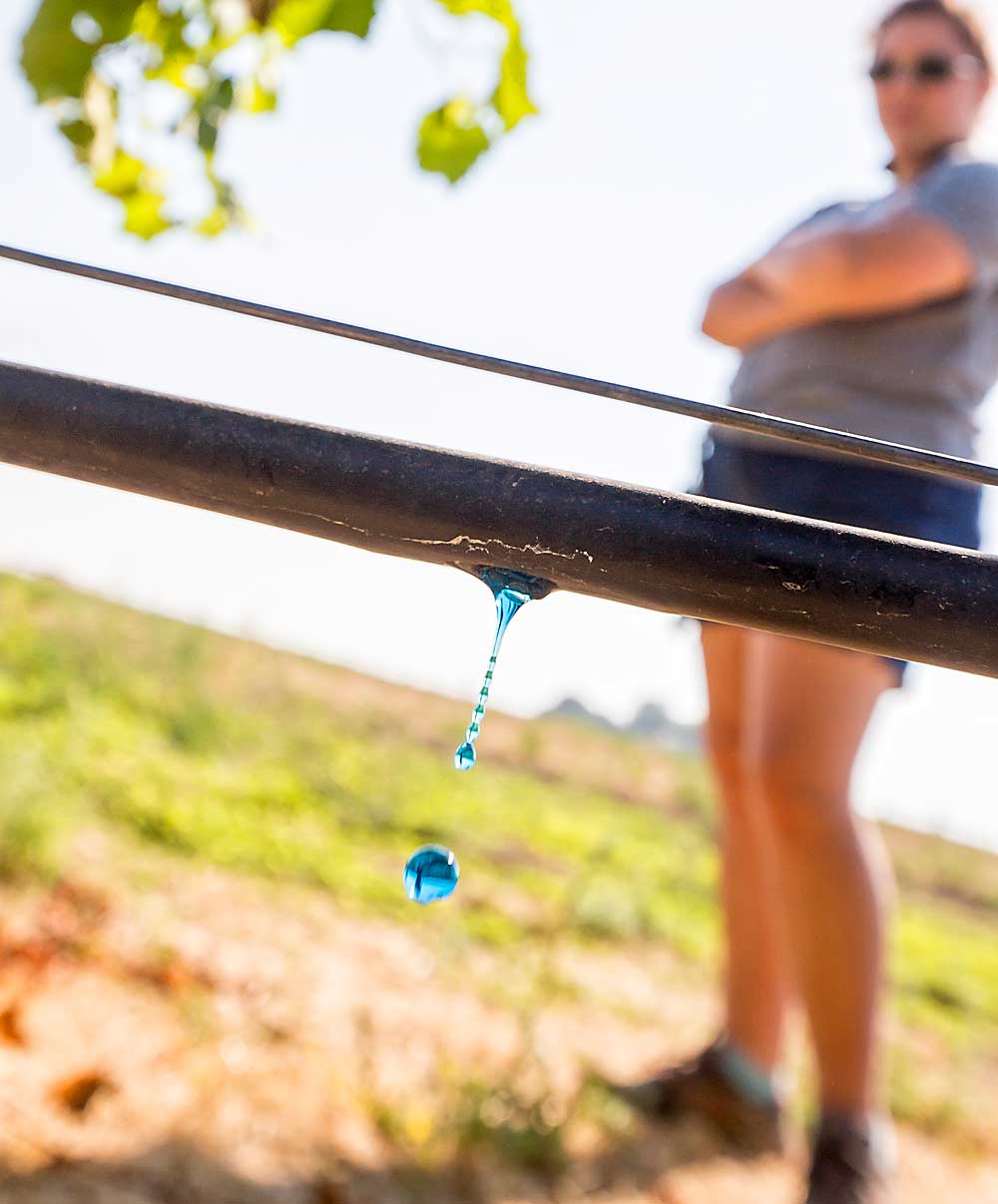
Nearly 20 years ago, the organization representing Washington wine grape growers initiated a sustainability program. The goal at the time was to ensure everyone was operating on a level playing field and to give growers and, later, winemakers tools they could use to better understand sustainable practices.
Fast-forward two decades: More vineyards have gone green and sought certifications, and the Washington Winegrowers Association hopes to increase those efforts with a relaunch of its Vinewise program.
The Washington Winegrowers Association is dedicating an entire session to sustainability at its annual conference, Feb. 12-14 in Kennewick, Washington. For more on the conference and the sustainability program to be covered on day three, visit wawinegrowers.org
“Then, and even more so now, there has been the challenge of defining sustainability,” said Vicky Scharlau, executive director of Washington Winegrowers, formerly known as the Washington Association of Wine Grape Growers.
“We can talk about the three Ps — people, planet, profit. Can’t have one without the other two. We can talk about the three Es — environment, economy, social equity,” she said. “We wanted to make sure we provided an effort over the long term to help people understand what sustainability is, why it’s important to them and give them tools and resources so they can rank where they fall on the sustainability scale and how they’re doing against the rest of the industry.”
The group contracted with Cliff Ohmart, a longtime sustainability expert in California’s wine grape industry, to help update Vinewise.
What’s striking about the new version, Ohmart said, is that it covers a lot more territory in terms of viticulture. Ohmart compared Vinewise to other programs to determine gaps in sustainability practices and worked with Washington growers to determine which gaps they wanted to fill.
“I am a big believer in self-assessment as a constant reminder of how you can improve your viticulture, not only from a sustainability perspective, but also an economics perspective,” he said. “These self-assessments are really designed around asking, ‘How do I grow quality wine grapes?’ Because that is what wineries want.”
Ohmart started working in wine grapes in 1995 when he began developing a sustainability program for the Lodi Wine Commission. Today, the Lodi region remains known as a green growing region, and to be certified growers must earn sufficient points in each category under the Lodi Rules.
The Lodi program grew into a certification program, Ohmart said, and the new Vinewise provides the foundation to develop a certification program in Washington, if the industry chooses.
There are three basic approaches to growing wine grapes — conventional, organic and biodynamic — and certification programs abound. (For more on certification programs and the economic benefits, see “Going green with reds and whites” from the Jan. 1, 2018, issue of Good Fruit Grower.)
However, sustainability is a broader concept, Ohmart said. Sustainable farming is about continually improving to minimize a farm’s environmental and social footprint.
“All of us are in denial about the things we really know we should be doing but don’t because of all sorts of reasons, the biggest being there are only so many hours in a day,” he said. “People hear sustainability, they think it’s about cover crops. It is that, but it is also day-to-day things that everyone knows they should be doing, but they fall through the cracks.”
He rattled off a few examples:
—How often do you measure the distance and uniformity of your irrigation system? “It takes time and effort and money, and a lot of growers just don’t do it,” he said.
—How frequently do you calibrate your sprayers? “If you’re putting the money into pesticides and fertilizers, you want to know it’s going on efficiently,” he said.
—Do you track how much water you use? And do you do so by individual farm or vineyard-by-vineyard?
Ohmart likened the ideas to rotating tires or changing the oil on a car. “The car companies want me to do it all the time, and in reality, if you change it more often, the engine will last longer,” he said. “I don’t try to make it sound like growers are neglectful; they are not. They are juggling all of this stuff. What I try to stimulate growers to do is be honest — look in the mirror and say, ‘Where do I need to improve?’”
He also said he views sustainable farming as a continuum. “No matter where you are on that continuum, and there’s people all along it, your goal should be to do better next year, and Vinewise is the tool to do that.”
Currently, Ste. Michelle Wine Estates requires its growers to participate in the Vinewise program, which covers roughly 70 percent of the acreage in Washington, Scharlau said. But in terms of the overall number of Washington growers participating, she’s not sure. That’s information she’s hoping to begin tracking going forward.
She recognizes some may still choose to opt out. If a grower believes he or she can sell grapes based on taste and a winery says it can sell wine based on taste, they’re not wrong, she said, and sustainability isn’t part of their messaging, branding or marketing.
“For those people who understand and target the market of consumers for whom sustainability is important, this provides tools to become more sustainable, learn more and work toward certification if they choose,” she said. “But it’s a self-directed effort.”
Scharlau also noted that sustainability is important to younger consumers. “Their pocketbooks follow the green effort,” she said. “We have over 900 wineries. Not all are going to use sustainable as a marketing tool … but we want to be able to have that access for those who do, because it is a growing market. It’s not a shrinking market.” •
—by Shannon Dininny






Leave A Comment